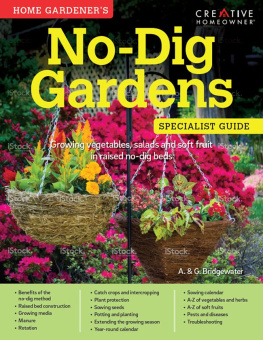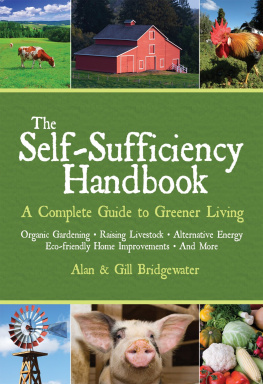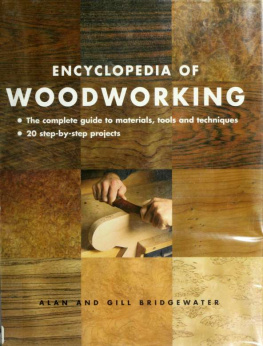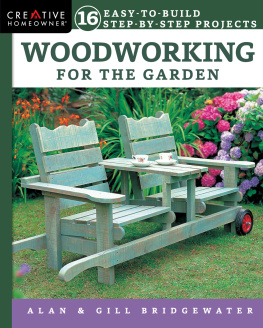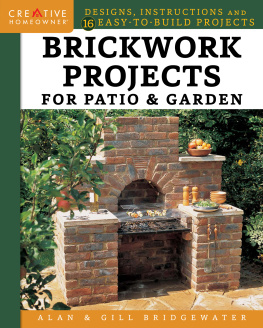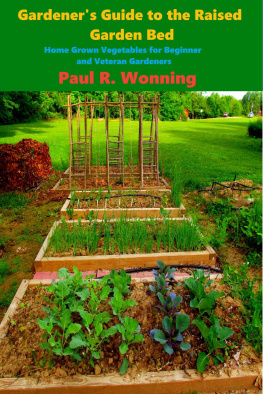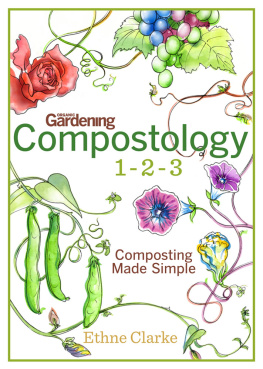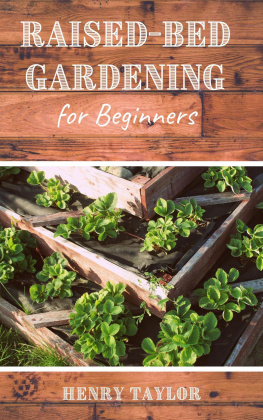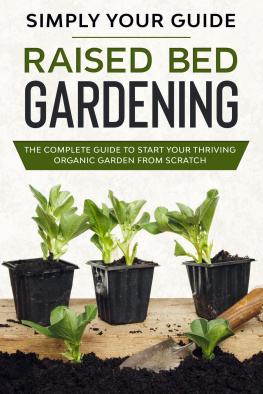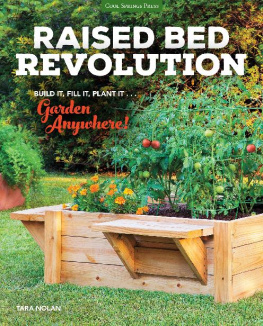Contents
Guide
Copyright 2004, 2016 text AG&G Books
Copyright 2004, 2016 illustrations and photographs IMM Lifestyle Books
Copyright 2004, 2016 IMM Lifestyle Books
This book may not be reproduced, either in part or in its entirety, in any form, by any means, without written permission from the publisher, with the exception of brief excerpts for purposes of radio, television, or published review. All rights, including the right of translation, are reserved. Note: Be sure to familiarize yourself with manufacturers instructions for tools, equipment, and materials before beginning a project. Although all possible measures have been taken to ensure the accuracy of the material presented, neither the author nor the publisher is liable in case of misinterpretation of directions, misapplication, or typographical error.
Creative Homeowner is a registered trademark of New Design Originals Corporation.
Designed and created for IMM Lifestyle Books by AG&G Books. Copyright 2004 Specialist AG&G Books
Design: Glyn Bridgewater; Illustration: Gill Bridgewater; Editor: Fiona Corbridge; Photographs: AG&G Books, Ian Parsons, John Freeman, OASE and Forsham Cottage Arks.
Current Printing (last digit)
10 9 8 7 6 5 4 3 2 1
Printed in Singapore
Title XXX is published by Creative Homeowner under license with IMM Lifestyle Books.
ISBN: 978-1-58011-748-7
Creative Homeowner, www.creativehomeowner.com, is distributed exclusively in the United Kingdom by Grantham Book Service, Trent Road, Grantham, Lincolnshire, NG31 7XQ.
Contents

Authors foreword
A big garden in the country, a small garden in the town, a concrete slab garden on an industrial estate, a run- down allotment plot, a scrubland garden by the sea, a rock-strewn garden no matter what your scenario is, if you have ambitions to grow your own organic vegetables a no-dig raised bed garden is the best way forward. The initial set-up will involve you in the sometimes sweat-making effort of drawing up plans, building beds, bringing in farmyard manure and spent mushroom compost, enclosing the whole area with a fence, and so on, but once you have the no-dig system up and running it will be a relatively smooth and easy ride. Just imagine no more heavy, back-breaking slog with a spade, no more double digging, no more thinking about the qualities of the underlying base soil, no more spending ten years trying to improve the soil, no more chemical cure-alls, and hardly any weeding. The no-dig system of growing vegetables has everything going for it. If you go one step further and keep chickens, compost all your own kitchen waste, and use some part of your paper waste to make a mulch, then you will be able to achieve a tight, self-contained, eco-friendly system that will give you maximum output for minimum input. As for the frequently asked question of how long it will be before you are eating your own produce, the simple answer is that as soon the beds are in place you will be ready to get growing.
About the Author
xxxxx

Measurements
Both metric and imperial measurements are given in this book for example, 1.8 m (6 ft).
SEASONS
This book is aimed at readers worldwide, so seasons rather than months are used early spring, mid-spring and so on. Although advice is given on the best time to sow, plant, tend and gather, because of regional variations you will have to be flexible and ready to modify dates to suit the mini climates that may exist in your area. In some northerly areas, spring may begin several weeks later than in more southerly regions.
Benefits of the no-dig method
N o-dig gardening is an organic system that allows you to grow vegetables and other plants in raised beds without the need for any back-breaking digging, and without having to improve the underlying natural soil in your garden. You can control the quality and depth of the growing medium in the raised beds and reduce the amount of work required to keep them free of weeds, pests and diseases.
What is no-dig gardening?
NO DIGGING
The no-dig system allows and encourages worms and other soil life to carry out the cultivation operations. Mulches of garden compost, farm manure, leafmould and other organic materials are layered up in raised beds in such a way that there is a reduction in pests, diseases and weeds, and an increase in beneficial soil fungi, worms, insects and microbes. This system might sound a bit too clever, but it is exactly how nature works: vegetation falls to the ground, worms and other soil organisms drag the organic matter down into the soil thereby enriching it, new plants grow, and so on.
HARDLY ANY WEEDING
There is an old adage that says one years weed seeds means seven years digging if you allow weeds to seed, you will be shackled by seven years of back-breaking digging and weeding. The no-dig system, however, sidesteps the whole problem of weeding by burying the seeds under layers of mulch. The undisturbed weed seeds are never given the chance to germinate.
SAVING EFFORT
In traditional vegetable cultivation you spend a huge amount of effort digging the whole plot, and then waste a good part of your efforts by walking over and compacting at least a third of the ground that you have painstakingly dug. With the no-dig raised bed system, the layout of paths and beds is permanent. Once the infrastructure is in place, you only need to expend effort on the growing areas within the beds.
PERFECT BALANCE
The no-dig system allows the population of beneficial soil life worms, insects, microbes and fungi to build up in such a way that a natural undisturbed environment is created in the important upper soil layers, with the effect of achieving a positive balance.
MORE BENEFITS OF THE NO-DIG SYSTEM
The height of the beds and the width of the paths can be tailored to suit your unique physical needs for example, if you are in a wheelchair or are unable to bend.
Higher crop yields are produced on a smaller ground area.
The underlying soil and the layered growing medium within the beds remain undisturbed.
More water and organic matter are retained in the growing medium.
The structure and make-up of the growing medium within each bed can be targeted to suit specific plants.
Beds can be designed to be hot, cool or deep.
The narrow width of the beds means that you never have to walk on the planted area, and never have too far to stretch.
The structure of the beds more easily allows the use of nets, windbreaks, plastic sheeting and fleece.

The no-dig system of raised beds and paths enables easy access to your crops.
Raised bed options
R aised beds are essential in this system because they define and separate the growing and walking areas, and enable the gardener to control the quality of the growing medium by layering up organic matter within the beds. The height of the beds can also be modified to increase or decrease the depth of the growing medium, as required for different crops. The beds can be made from a variety of different materials.

